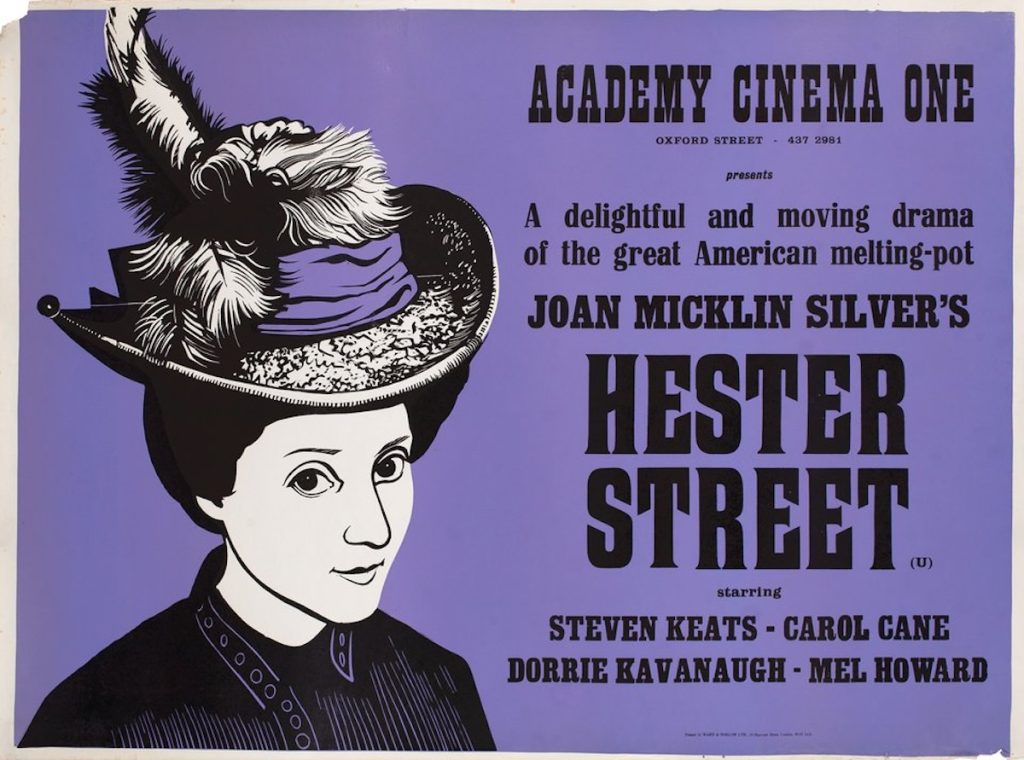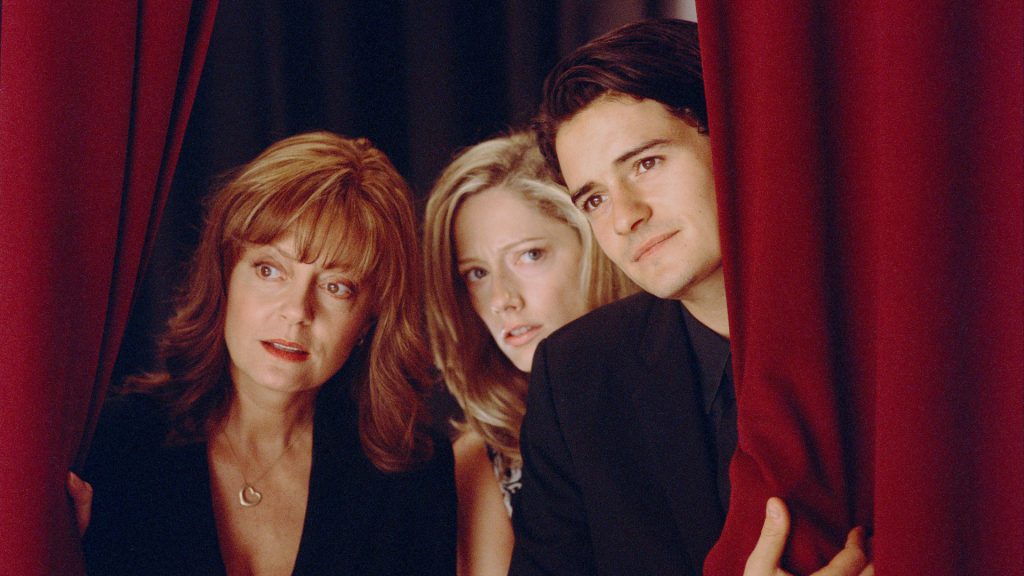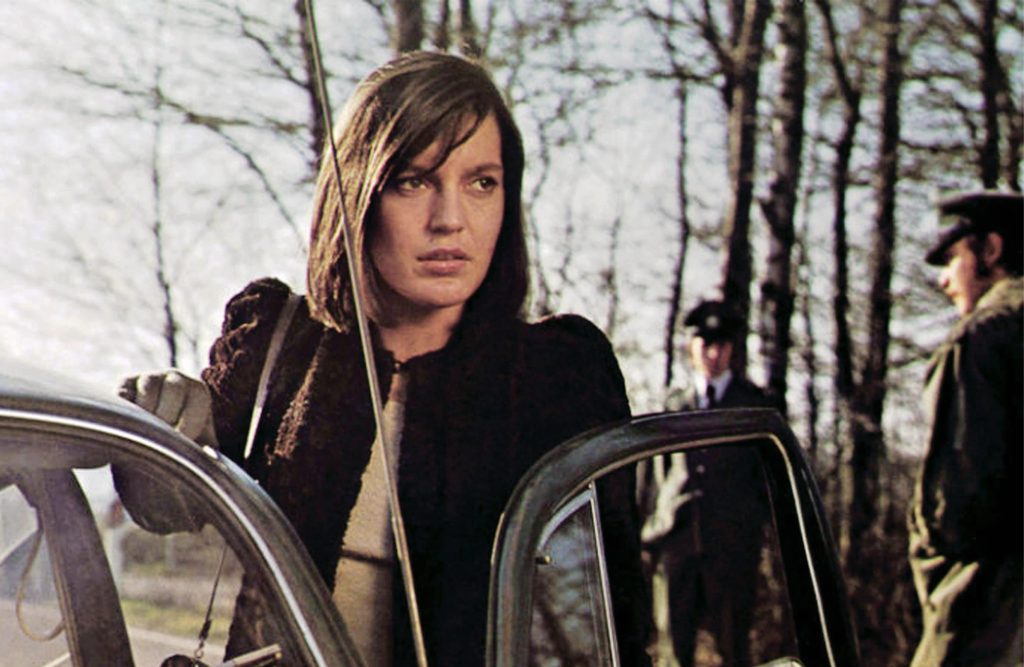There’s a brief little sequence in Doris Wishman’s film Deadly Weapons (1974) that crystallizes the paradox of her work. It’s an establishing shot of a strip club; the dancers are performing a charmingly retro can-can number. Wishman shoots the dancers from the waist down. As they dance in a circle while lifting their skirts, the spectator’s view alternates from a full-on crotch shot (the dancers’ panties and stockinged legs leap out at the camera), and the lyrical, almost abstract fanning of the dancers’ skirts as they flit and overlap in circular patterns. This oscillation reveals a fundamental duality in Wishman’s style, which asks us what we are to make of her, a woman director working in one the most male genres: the sexploitation films that flourished in the ‘50s through the ‘70s.
Wishman – currently the focus of a six-film spotlight on the Criterion Channel – started working as a secretary and saleswoman in the indie film world before she made her first film in 1960, thanks to a $20,00 loan from her family. She would go on to make 30 more films before her death in 2002. (The final one, an attempt at a teen slasher film called Each Time I Kill, was released posthumously in 2007.) Her career followed all the major trends of the sexploitation phenomenon, which first took off with the “nudie” or “nudie cuties” of the late ‘50s and early ‘60s. These films, which were quasi-ethnographic explorations of real-life nudists camps, benefitted from loosening censorship laws because they ostensibly had educational merit.
Wishman’s innovative and charming take on the genre was Nude on the Moon (1961). (She sometimes used male pseduonyms for her films, and directed Nude on the Moon under the name of Anthony Brooks) Following the age-old sex worker’s credo that “ya gotta get a gimmick,” Wishman frames the typical nudie content (idyllic scenes of frolicking, swimming, and ball-tossing) within a space exploration story. Two astronauts make it to the moon, where they discover a friendly alien race that has evolved beyond bras, and the men “observe” their behaviors (mostly frolicking and ball-tossing). The nudie cuties generally show the colonies as Edenic paradises, and Nude on the Moon adds a cute Star Trek-y earnestness to that vibe.
After the nudie cuties, Wishman, like the rest of the industry, got into the “roughies”—primarily black-and-white tales of urban debauchery that featured “seduction” scenes and violence against women. It’s here that her work becomes more difficult to parse. In the Third Wave feminism of the ‘90s, many images of women from sexploitation (previously declaimed as inherently degrading in the “porn wars” discourse of the ‘80s) could be reclaimed. The women of sexploitation—like the big-busted vixens of Russ Meyer’s films—could be seen as cartoony but powerful manifestations of women’s erotic power and agency. Wishman, too, was rediscovered during this period, but her work was more difficult to reclaim.
Meyer’s films drew feminist interest because they were campy and winking, and often in on the joke of the simultaneous surrealism and banality of men’s erotic longings. There are certainly times when Wishman also seems to have her cake and eat it too. Both Deadly Weapons and Double Agent 73 (1974) starred the actress Liliana Wilczkowska, made famous under the name Chesty Morgan, thanks to her 73-inch bust. It’s hard to see these films as anything but provocative parodies of a male obsession with breasts. If breasts are what you want, you’re going to get your money’s worth: Morgan’s assets are trussed up in lacy and bejeweled bras, pushed up and out of silken nighties. They are washed and massaged and soaped at great length.

But Wishman also adds another parodic, but also exploratory gaze on Chesty’s… chest. Her breasts are explored from a variety of angles, seemingly out of a visual curiosity outside of the predictable templates of erotic display. They are refracted through fun-house mirrors, and the camera hesitates contemplatively on drops of blood that fall on their sides. There is a suggestion here that the erotic imaginary may be more complex and weirder than standard pornographic imagery, and Double Agent 73 plays the ultimate joke on the titillated viewer: The premise of the film is that Morgan is a spy who has a camera implanted in her breast in order to collect evidence against the baddies. The object of the male gaze thus turns and gazes back. And it’s coming to punish.
But the ultimate challenge to a feminist reclaiming of Wishman is that she really is at the height of her artistic powers in her roughies – she is her best as a filmmaker in stories of the rapes and beatings of women. There is no doubt that Wishman relishes the aesthetic possibilities of shooting such scenes; particularly in Bad Girls Go to Hell (1965), she shows an undeniable flourish depicting the twisting of beautiful feminine limbs as they writhe to escape, the clenched of ankles as victims try to keep their legs closed. If these scenes are aestheticized (and perhaps, depending on the viewer, eroticized), they are no less terrifying for that. The extreme angles (a Wishman signature) create a quite visceral impression of what it’s like to have a man on top of you when you don’t want him to be there. Yet in these scenes of beatings and rapes, Wishman’s camera also roves around the room, lingering on close-ups of discarded shoes and underwear, or of clocks on walls and a weird array of plants and ceramic figurines that lie strewn around spare, nondescript rooms. These are strange details that embellish the basic codes of the roughies—signs, perhaps, of the victim’s dissociation, or a refusal to show all.
Critics have debated whether Wishman actually had a “style.” Some have seen a Godardian eloquence in her fragmented and fragmentary images, and her refusal of psychological depth. Others have viewed her as the Ed Wood of the roughies, a director of a naivete that produced an unwitting, unironic camp and stumbled upon an oddball style of some visual interest. This seems ridiculous to me. It discounts the many textures that Wishman layers onto the roughie genre: not just the artistically accomplished sleaze, but also the camera’s existential wandering, a slightly quirky eye for presenting womens’ beauty, and an underrated talent for sneaking bits of quotidian femininity into the films.
Her roughies have an appealingly gritty atmosphere, and the odd décor that she manages to find for those lingering shots gives these spaces of crime and sin a sexily louche vibe. The sexual encounters (violent or otherwise) are always prefaced by long sequences of women dressing and undressing, or lounging around in their slinky catsuits or negligees. In these sequences, Wishman gives the customer what they came for, but there’s also a naturalism to these “scenes”; the women assess and adjust themselves in their expensive lingerie in a way that has a touch of reality. Wishman’s women have a private sexuality, an autonomy, that makes everything more awful when it is violated.
The many moves and preoccupations of Wishman’s camera demand that we take more multidimensional views of women who work(ed) in sexploitation, whose situation is, after all, merely an intensification of that of all women filmmakers who work in a still largely male-dominated industry. Wishman cannily (and perhaps cynically) traded in the stereotypes of male desire. She also undoubtedly added a feminine perspective, sympathy for victims, and a defiant insistence on female sexual pleasure, even in a world that seems determined to ignore or kill it. When we watch Wishman today, we must similarly confront our complex webs of desire, fear, revulsion, and the unpredictable moments of complicity and resistance.
Six Doris Wishman films are currently streaming on the Criterion Channel.



